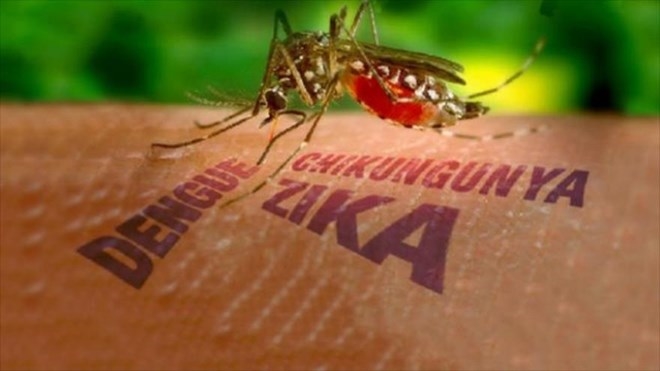 Society
Society

The Ministry of Health has urged localities to take drastic prevention measures in response to an increase of Zika patients in Southeast Asian countries.
 |
HÀ NỘI — The Ministry of Health has urged localities to take drastic prevention measures in response to an increase of Zika patients in Southeast Asian countries.
Localities are instructed to implement strong campaigns to eradicate mosquito larvae, a key source on the spreading virus said.
The health sector is required to increase surveillance and promptly test suspected cases for early detection and treatment. Medical stations must prepare enough beds, medicine and other infrastructure to be ready to receive Zika patients.
The disease’s clinical symptoms, such as fever and rash, are similar to diseases such as rubella.
Local health sectors were urged to strictly follow the ministry’s professional guidance on disease prevention. Doctors at hospitals with obstetrics wards have been trained to screen for microcephaly, an abnormal smallness of the head that is suspected to be caused by the disease.
Health clinics and hospitals should work with district health officials to provide counselling on the disease and methods of prevention.
More training should be given to medical workers at the grassroots level, and to task forces in case an epidemic breaks out, the ministry said.
At an online meeting between the health ministry and localities last week, they agreed to increase the application of quick tests to have prompt prevention and control measures.
Head of the ministry’s Department of Preventive Medicine, Trần Đắc Phu, said institutes should set up plans to keep close watch on the Trioplex test used to diagnosis Zika virus cases in the early stage. The use of the test began this month.
Additionally, the National Institute of Hygiene and Epidemiology will organise training courses for medical workers across the country to learn to correctly test patients.
Việt Nam has so far recorded three cases of Zika. The latest case was detected early last month.
Zika is caused by a virus transmitted primarily by Aedes mosquitoes. People with Zika virus often display symptoms including mild fever, skin rash, conjunctivitis, muscle and joint pain, malaise or headache. These symptoms normally last from two to seven days.
There is a scientific consensus that the Zika virus is a cause of microcephaly in newborn babies and Guillain-Barré syndrome. Links to other neurological complications are also being investigated, according to the World Health Organisation (WHO).
WHO has announced that transmission of the Zika virus has slowed, but the risk remains significant.
At present, 70 countries and territories around the world have reported Zika cases, including those in Southeast Asian region.
Singapore confirmed 17 new cases of locally transmitted Zika virus infection as of yesterday, said the Ministry of Health and National Environment Agency in a joint statement. The update brings the total number of Zika infections in Singapore to 275.
The first Zika case in Singapore was detected on August 27. The Philippines’ Department of Health confirmed on Monday that a woman from Iloilo City tested positive for the Zika virus, the sixth case recorded in the country.
Health Under-Secretary Gerardo Bayugo stated that the 45-year-old victim might have been infected with the virus locally, as she has no record of travel to countries where the virus has been detected. However, Bayugo clarified that there is still no confirmation of local transmission of the virus in the Philippines. According to him, five other cases have been detected since 2012, but these did not create an outbreak.
Thai authorities have stepped up surveillance after two pregnant women in Bangkok were found to have been infected with the Zika virus. The number of Zika cases this year has increased significantly compared to recent years. As many as 97 Zika cases were reported in the country in the first six months of this year. — VNS




